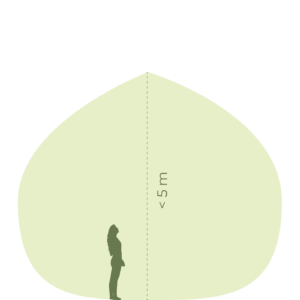Cornell, sanguinyol (Catalan) | Sangomiño, sambuguiño (Galician) | Sanguinho-legítimo (Portuguese | Cornejo (Spanish) | Cornouiller sanguin (French)
The dogwood is a large shrub that sometimes grows into a small tree that extends above 5 metres in height.
The leaves are deciduous, simple, opposite, oval or elliptical, with a smooth edge and ending in a point, where the nerves are well defined. Meanwhile, the upper side is smooth, the underside, a little rough due to its covering of hair. Measuring up to 9 cm in length, 6 cm in width, they also have a long stem. With a green tone in spring and summer, they turn a deep red colour in autumn, hence adopting the specific name sanguine or blood-red.
Flowering towards the end of spring and in summer, the flowers are white or cream-coloured and bright, blooming in numerous clusters at the end of the branches.
The fruit is bluish-black, globular, fleshy, glossy, the size of a pea and ripening in autumn. While they have an appetising aspect, they are actually toxic to eat.
The dogwood is a companion species that can be found in evergreen or deciduous forests, hedgerows, on thorny edges, groves and clearings. They thrive in shady and humid environments, therefore moving further south to take refuge in shady and cool ravines, in streams and watercourses protected from direct sunlight.
They grow well in both calcareous and siliceous ground, provided they are cool and light, without having high expectations on its quality. They live in areas anywhere between sea level to roughly 1300 m.
The wood from dogwood has a pinkish-cream tone, of excellent quality, very hard and resistant and great for making small objects like musical instruments, handles and small turned pieces.
The fruit is non-edible for humans, potentially causing vomiting, but they are prized by birds and other mammals, responsible for dispersing the seeds through their faeces, facilitating the spread of the species. They do contain calcium malate, a substance used in the food industry to reduce acidity in food.
The leaves and bark have been used to treat diarrhoea (astringent), to lower fever (febrifuge), and, due to their salicylic acidic content, as found in willow trees, for pain relief (analgesic).
Its generic name of Cornus is the Latin name given to dogwood trees, deriving from the Greek word krános, (meaning cherry), due to the similarity of its fruit to the male dogwood. The specific epithet sanguinealludes to the blood-red tone taken on by its leaves in autumn.







